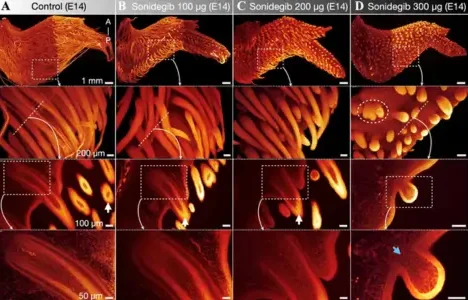What happens when you mix chicken embryos, a gene named after a video game icon, and a couple of curious scientists? You get a fascinating discovery about feather evolution—one that briefly turned developing chicks into something a little more… prehistoric.

In a groundbreaking study, geneticists Professor Michel Milinkovitch and postdoctoral researcher Rory Cooper decided to tinker with the Sonic Hedgehog (Shh) pathway—a key player in embryonic development. This pathway, named after the speedy blue hedgehog himself, is crucial in shaping various body structures, including feathers in chickens.
Milinkovitch and Cooper had previously explored what happens when the Shh pathway is stimulated. The result? Chicken embryos that grew feathered feet instead of the usual scaly ones. But this time, they wanted to see what would happen if they blocked the pathway instead.
So, they injected chicken embryos with a molecule that inhibits the Shh pathway. By day nine of development, something unusual was happening. Instead of growing the familiar barbed, complex feather buds, the embryos began developing something much simpler—tube-like structures eerily similar to proto-feathers.
These primitive structures are believed to have existed in some dinosaurs during the Early Triassic period, eventually evolving into the intricate feathers we see in birds today. The fact that these structures reappeared when the Shh pathway was disrupted suggests it played a critical role in feather evolution.
But this transformation was only temporary.
By the time the embryos hatched, some had patches of bare skin, but their feather follicles surprisingly reactivated within seven weeks. Eventually, they developed normal feathers, as if nothing had happened.
‘‘Our experiments show that while a transient disturbance in the development of foot scales can permanently turn them into feathers, it is much harder to permanently disrupt feather development itself,’’ Milinkovitch explained.
So, no dino-chicken hybrids just yet. But this study highlights just how crucial—and resilient—the Shh pathway is in feather development. Over millions of years, genetic networks have become so robust that even significant disruptions can’t permanently derail the process.
‘‘The big challenge now,’’ Milinkovitch added, ‘‘is to understand how genetic interactions evolve to allow for the emergence of new features like proto-feathers.’’
The study is published in PLOS Biology.
ref : iflscience






